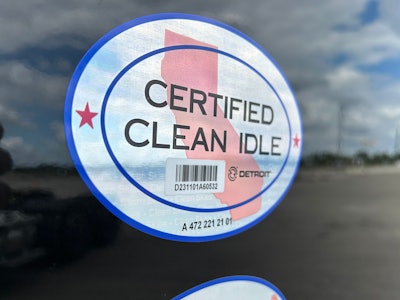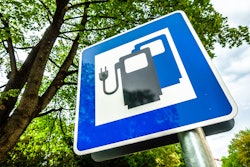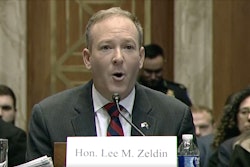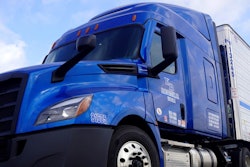
Recently, the California Air Resources Board (CARB) withdrew its request for a waiver to the Environmental Protection Agency (EPA) to enforce the Advanced Clean Fleet (ACF) rule. The ACF placed the burden on fleets to purchase zero-emission vehicles (ZEV) as a percentage of their new trucks.
Will this action stop the deployment of battery electric vehicles (BEVs) and hydrogen fuel cell electric vehicles (FCEVs)? Will dealers still be challenged to sell BEVs and possibly restrict or limit internal combustion engines (ICE)? Will it end “ratio-ing?”
Before addressing these questions, let me summarize the ACF.
ACF basics
ACF mandated fleets with 50 or more vehicles or $50 million in revenue to purchase a percentage of ZEVs when purchasing new vehicles. The regulation was to take effect this year. As the table below indicates, there was some segmentation between medium-duty trucks and heavy-duty trucks. The percentage of ZEVs increased over time and by 2042, all new purchases were to be ZEVs. If a fleet focused on drayage, ACF expected 100% of new truck purchases to be BEVs in 2025. If a fleet was a state municipality, it expected 50% of new sales to be ZEV through 2026 growing to 100% starting in 2027.
 CARB
CARB
Unlike the Advanced Clean Truck (ACT) rule, ACF was not as broad reaching. First, only 8% of fleets in the nation have more than 50 trucks. However, it is worth noting that the large fleets do run a large portion of the miles. Also, ACF was adopted only by California. This is different from ACT, which several states have either adopted or have signed a memorandum of understanding indicating their participation. Finally, the rule did not mandate that large trucks be purchased. For example, if a fleet runs only Group 3 trucks, the rule said only 10% of their new purchases in 2030 had to be ZEVs. The fleet could purchase Group 1 vehicles, such as yard trucks or even vans and meet the expectation.
ACF was the first type of emissions regulation placed on the fleet on the “demand” side. For those of us who have been in the industry over many decades, EPA and CARB have made significant progress in cleaning the air by placing the burden on the OEMs or engine manufacturers.
So now that ACF no longer exists, have BEVs gone away? No. We still have ACT, EPA Greenhouse Gas (GHG) Phase 3, EPA 2027 Low NOx rule, and the Warehouse rule. As long as these remain in effect, they will drive ZEV adoption. Then there are economic reasons that support BEV adoption, and NACFE have identified some of these.
Basics of ACT
ACT is a regulation imposed on the OEM. As illustrated in the figure below, OEMs are expected to produce a percentage of new trucks as ZEVs. For 2025, 11% of an OEM’s medium-duty (Class 4-8 vocational) truck sales need to be ZEVs and 7% of heavy-duty (Class 7 and 8 tractor) trucks need to be ZEVs. OEMs must follow ACT in states that have adopted the rule.
 Volvo Trucks
Volvo Trucks
What kind of impact does this have on the dealers and vehicle sales?
Even with the withdrawal of the ACF, ACT certainly has teeth and will drive BEV adoption. It has created some challenges for OEMs and their dealers. The term “ratio-ing” was explained by my colleague Rick Mihelic, NACFE’s director of emerging technologies, to mean that some manufacturers are requiring dealers to sell a specific ratio of ZEVs-to-ICE vehicles. For example, as the graph above illustrates in 2025, 11% of OEM medium-duty vehicles sales have to be ZEV. This means that one in every nine medium-duty vehicle sold must be a ZEV. If the OEM cannot meet this quota, they either need to apply credits, limit ICE sales, purchase credits from other manufacturers or somehow create an incentive for fleets to purchase BEVs. That incentive could be to lower the cost of the BEVs, or it could also be to raise the price of ICE vehicles.
Also, it is worth noting the recent announcements by Daimler Truck North America and Volvo Trucks North America that they paused or limited sales in Oregon. Daimler made an announcement in December that they were pausing ICE sales but then resumed the sales in mid-January. This was related to some confusion as to how credits are calculated in Oregon. While Daimler is selling ICE vehicles in Oregon, there is still a limit, and they must sell at least 7% of their trucks to be BEVs. Volvo did not pause ICE sales but is limiting sales.
There is some talk in the trucking industry that ACT could be delayed or relaxed because of high costs, lack of infrastructure and lawsuits. I believe that we could see some delays or relaxation of the quotas. However, it is worth noting that as a part of the Clean Truck Partnership agreement, major OEMs committed to abide by ACT. If OEMs walk away from this commitment, it might open the door for CARB to reverse its alignment with EPA on the .035-gram NOx rule.
Will other regulation drive EV adoption?
OEMs and/or engine manufacturers still face other forms of regulation, like GHG Phase 3 and EPA27 Low NOx. The OEMs will use aerodynamics, low rolling resistance tires, and powertrain technologies to comply with GHG Phase 3. However, some people believe that the required CO2 reduction is rather large and some mix of BEVs along with the ICE vehicle sales will be needed. Hybrids also are an option, and I will discuss that in an upcoming blog.
Low NOx does not directly drive greenhouse gas reduction, but it does require additional components and adds complexity to the diesel engine. This will increase the cost of the vehicle and directionally reduce the total cost of ownership (TCO) gap between ICE vehicles and BEVs. Finally, there are warehouse rules that also will drive the adoption of ZEVs, like yard tractors.
While the withdrawal of the ACF has relieved some accounting headaches for the fleets and relaxed some of the BEV requirements in applications such as drayage, there are still plenty of rules — both at the state and federal level — which will drive BEV adoption.
Additionally, some companies are investing in BEVs because they make sense for their businesses, and they expect positive future TCOs.
As we all try to clean the air, the trucking industry is struggling with costs and infrastructure problems with BEV, so we need to work to help fleets solve these problems. This can be done by finding solutions that lower costs, increase efficiency, and develop alternate fuels.
We have our work cut out for us.









